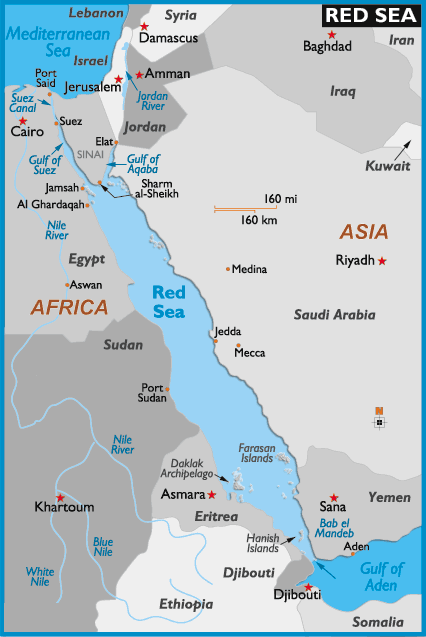- Home
- Prelims
- Mains
- Current Affairs
- Study Materials
- Test Series
How Red Sea attacks put India's trade at risk?
The Houthi militia in Yemen has carried out a series of attacks on cargo ships in the Red Sea, making the usual route through the Suez Canal unsafe. As a result, ships have to take a longer route around the Cape of Good Hope, which is more expensive and time-consuming for deliveries. Since November, the Houthi rebels in Yemen have been attacking ships in the Red Sea as a way to demonstrate their solidarity with Hamas in the conflict with Israel.
Significance of the Red Sea trade route
- The Red Sea has been a crucial route connecting civilizations and continents such as Asia, Africa, and Europe throughout history.
- The Suez Canal, established in 1869, has served as a major trade route, significantly reducing the distance between Europe and Asia by 7000km.
- Additionally, due to its economic importance and strategic location, particularly the narrow width of the Suez Canal, the Red Sea has also gained geopolitical significance.
|
Why Red? Red Sea doesn’t appear red at all.
Physical Features
Salinity The Red Sea is one of the saltiest bodies of water in the world, Here are the reasons
Biodiversity:
Economic aspects
|
Impact on India
- Global shipping companies have started adding additional charges to their normal freight rates due to the recent attacks along the Bab-el-Mandeb Strait.
- Indian exporters are concerned that if the security threats in the Red Sea trade route continue, freight rates for shipments to Europe and Africa could increase by 25-30%.
- This is problematic for India as the European Union is one of its major export destinations, and the reduced demand from the region is impacting labour-intensive sectors like textiles and jewellery exports.
India has implemented various actions to address the issue:
- The Indian Navy has substantially increased force levels and greatly enhanced maritime surveillance operations in the central and northern Arabian Sea.
- To perform maritime security operations and support merchant vessels in case of an incident a task group composed of destroyers and frigates have been assigned to the mission.
- Long-range maritime patrol aircraft and RPAs have added complete marine domain awareness to aerial surveillance.
- The Indian Coast Guard and the Indian Navy are partnering closely to ensure efficient monitoring within its economic exclusive zone.
- The Indian navy together with various national marine authorities monitor the overall situation.
- It is not yet clear whether India will participate in Operation Prosperity Guardian, as announced by US Defense Secretary Lloyd Austin to protect trade routes in the Red Sea.









 Latest News
Latest News

 General Studies
General Studies